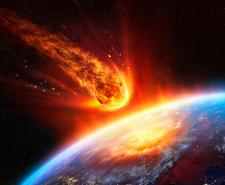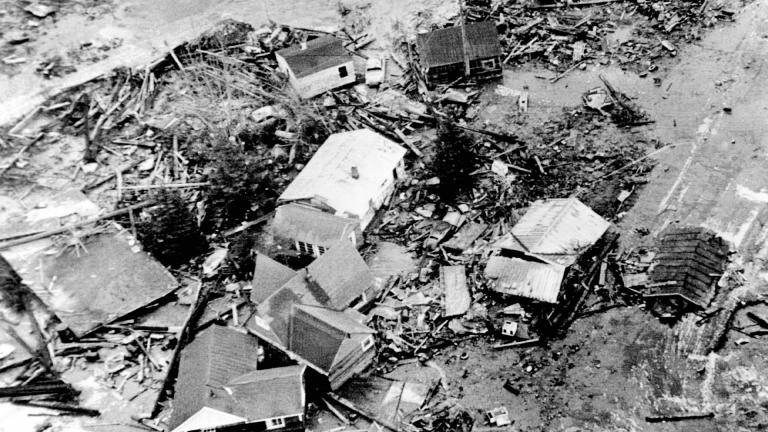
Read more about Disasters

While the climate crisis might be a very modern concern, Mother Nature has been wreaking havoc on humanity for centuries. Many of the most devastating natural disasters in history date back to a time when there were no easy means of recording their full impact.
In the Sky HISTORY series Curse of the Ancients, Professor Alice Roberts shows how modern scientists are able to investigate earthquakes from the distant past. However, with the development of seismometers, experts have been able to precisely record the power of earthquakes occurring since the start of the 20th century.
Traditionally, this power has been measured on the Richter scale. More recently, this has been superseded by the moment magnitude scale. Below, we at Sky HISTORY look back at the five most powerful earthquakes ever recorded - along with their magnitudes and death tolls.
There’s not always a direct correlation between an earthquake’s strength and its lethality. One good case in point is the Severo-Kurilsk earthquake, which reportedly did not claim a single life despite reaching a massive magnitude of 9.0.
The Severo-Kurilsk earthquake occurred just off the Russian Far East’s coast on 4th November 1952. The subsequent tsunami did cause some fatalities - those of six cows more than 3,000 miles away in Hawaii. There was also widespread damage to property on the US state’s islands, with the repair bill thought to total about $1 million.
On 11th March 2011, an undersea earthquake of magnitude 9.1 arose near the eastern coast of Japan’s largest island, Honshu. The incident also set off a tsunami, waves of which were thrust upon the Fukushima nuclear plant, resulting in multiple reactor meltdowns.
Tsunami waves triggered by the earthquake even rippled through to the other side of the Atlantic. The death toll of the earthquake’s overall impact — including the tsunami — approached 20,000. The Tōhoku earthquake has also proved hugely costly from a financial standpoint. The damage is thought to have exceeded $300 billion.
The repercussions of the Tōhoku earthquake weren’t the type that Japanese authorities had adequately prepared for. However, officials have since made big progress in bolstering the country’s resilience against such shocks that may arise in the future.
Here’s another undersea earthquake with a recorded magnitude of 9.1. This one erupted close to Sumatra and the Andaman Islands — hence the references to both in the earthquake’s widely accepted name. However, Indonesia also took much of the damage.
The earthquake struck on 26th December 2004, but an even bigger deal than the earthquake itself was the resulting tsunami. It has often been dubbed the Boxing Day Tsunami.
This tsunami is deemed one of recorded history’s deadliest natural disasters, as it is thought to have killed more than 230,000 people in total. Meanwhile, over a million were left homeless.
Overall, more than a dozen countries — including India, Sri Lanka and Thailand — were left reeling by the combined crisis of the earthquake and tsunami.
Anchorage, the most populous city in Alaska, was only about 120km away from the Great Alaska earthquake’s epicentre. The earthquake itself struck on 27th March 1964, and its magnitude of 9.2 makes it the most powerful ever recorded in North America.
Hardly surprisingly for such a large earthquake, it sent tsunami waves far and wide. They reached as far as Hawaii, the only other non-contiguous US state. The death toll resulting from the earthquake’s dangerous effects is believed to have passed 120.
The Good Friday earthquake — as it is sometimes called — was also responsible for billions of dollars of physical damage. Anchorage was especially badly affected, with landslides prevalent.
Alternatively referred to as the Great Chilean earthquake, this is traditionally thought to have reached a magnitude of 9.5. More recently, scientists have suggested that its magnitude might actually have been slightly higher or slightly lower.
All in all, though, it remains likely the most powerful earthquake to have come about since the beginning of the 20th century. It took place about a hundred miles from the Chilean coastal city of Valdivia on 22nd May 1960.
Like other earthquakes, it was not as destructive as the tsunamis following it. The whole episode is estimated to have killed roughly 1,655 people, while two million were displaced.
Keen to learn more about how the natural world has changed over time? You can pick up various intriguing details by subscribing to the Sky HISTORY newsletter.